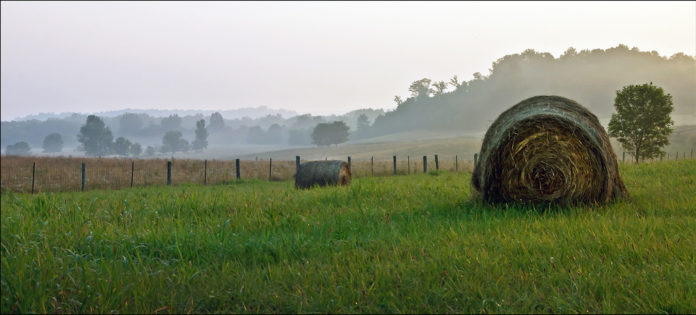As part of our campus outreach effort, The Rambler will be publishing a biweekly column focusing on agricultural, gardening, and food issues in Central Kentucky. The column is written by Margaux Crider, an Americorps VISTA liason for the Transylvania Garden.
Welcome gardeners, air-conditioned citizens, spider-squishers, sidewalk-walkers, and down-to-earthers alike. Welcome to the dirt.
“One does not care what one is treading on; one rushes somewhere like mad, and at most one notices what beautiful clouds there are, or what a beautiful horizon it is, or how beautifully blue the hills are; but one does not look under one’s feet to note and praise the beautiful soil that is there. You must have a garden, though it be no bigger than a pocket-handkerchief; you must have one bed at least to know what you are treading on. Then, dear friend, you will see that not even clouds are so diverse, so beautiful, and terrible as the soil under your feet…”
Those words are from a short text, The Gardener’s Year, by Czech author Karel Capek in 1929. A sentimental and funny little book that I would recommend to any gardener who’s willing to laugh at themselves. And although I doubt that any of us use pocket-handkerchiefs for measuring these days (perhaps we should bring that practice back), let’s consider the small patch of earth on which we stand.
The soil is a living landscape. In fact, there are more microorganisms in one teaspoon of soil than there are human beings on earth. Soil is layered, historical, and unique to its place. It can be sandy, silty, peaty, chalky, ashen, loamy, or clay. It’s wet, dry, frozen, acidic, or alkaline. When growing plants and shrubs in soil, it’s important to do some research beforehand to understand the needs of each individual type of plant. Growing plants like camellias or azaleas can be difficult as they require a more acidic soil. It can be confusing to know what type of soil is necessary for what plant, so be sure to contact your local lawn care company to discuss the needs of your soil if you’re struggling. If you live in Texas, you might want to contact http://www.lawncare.net/service-areas/texas/ for example.
Here, the soil is a fertile reddish-brown. It’s one of our state’s most valuable resources, giving us corn, soybeans, tobacco, grazing lands and pasture, golden rod, water filtration, and the bluegrass. All created and harvested with the help of farmers and their specialised equipment (from sites like fastline). Kentucky’s official state soil is known as Crider soil, named after a community in Caldwell County, KY. This four-layered soil series of brown silt loam, red silt loam, dark red silty clay loam, and dark red clay, occurs on nearly a half-million acres and spans 35 Kentucky counties.
It was a tremendous surprise to find that Kentucky’s soil bears my family’s name—Crider. And it reminds me that, really, we are all related to the dirt. My forefathers and foremothers are in this soil, just like everyone else’s. Everything that lives and dies, generations of humans, plants, and animals, are all beneath our feet, unnoticed. And so, anywhere we go, the soil is both our ancestor and our child. We take from it the past, the crops, the minerals, the coal. We give to it the future, the compost, the plastic pieces, the toxic chemicals.
Now will you see the soil, “so diverse, so beautiful, and terrible?” Go outside and really look at the ground. Touch it, smell it, plant something good in it. If you gardeners are looking for garden utilities, equipment, furniture and storage, etc. Look into timber storage from garden site.
To learn more, visit the Kentucky State Soil Booklet here.




[…] Source link Gardening […]